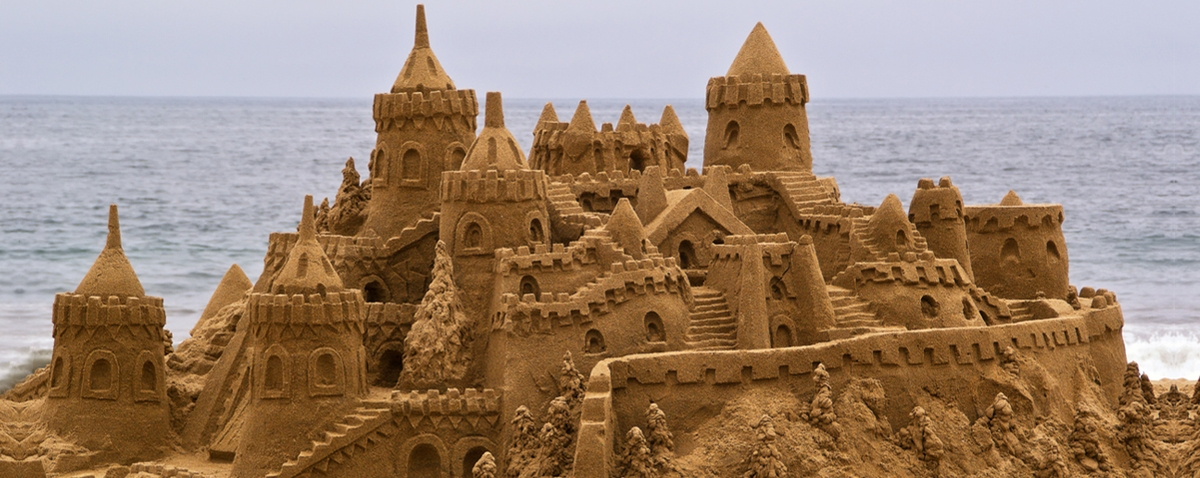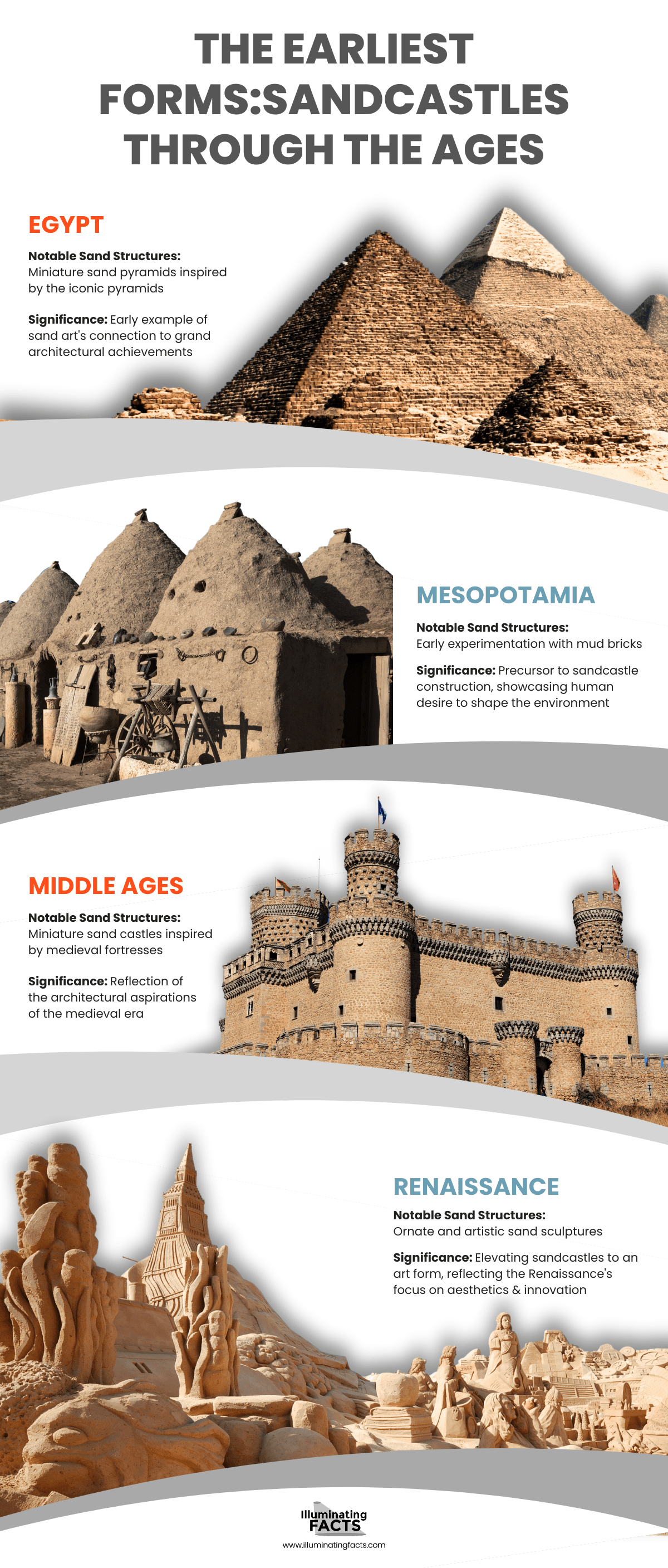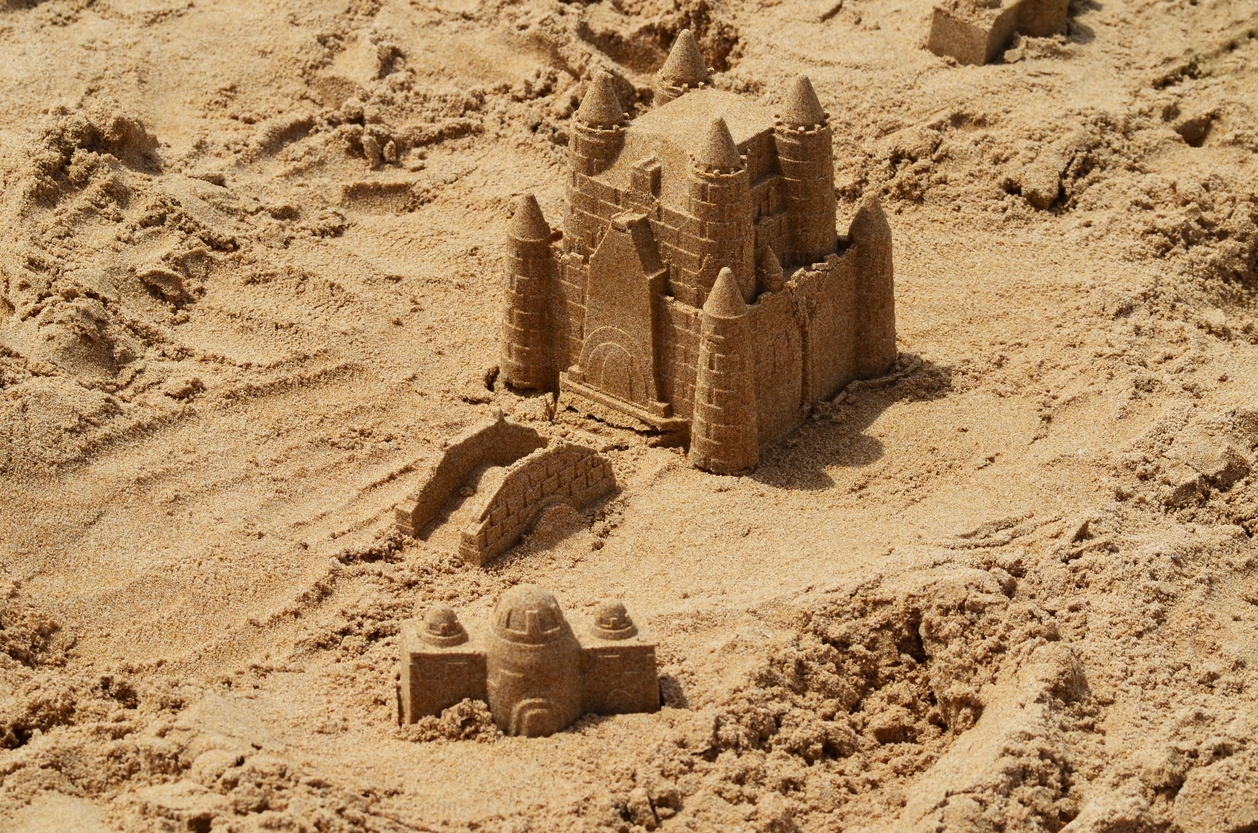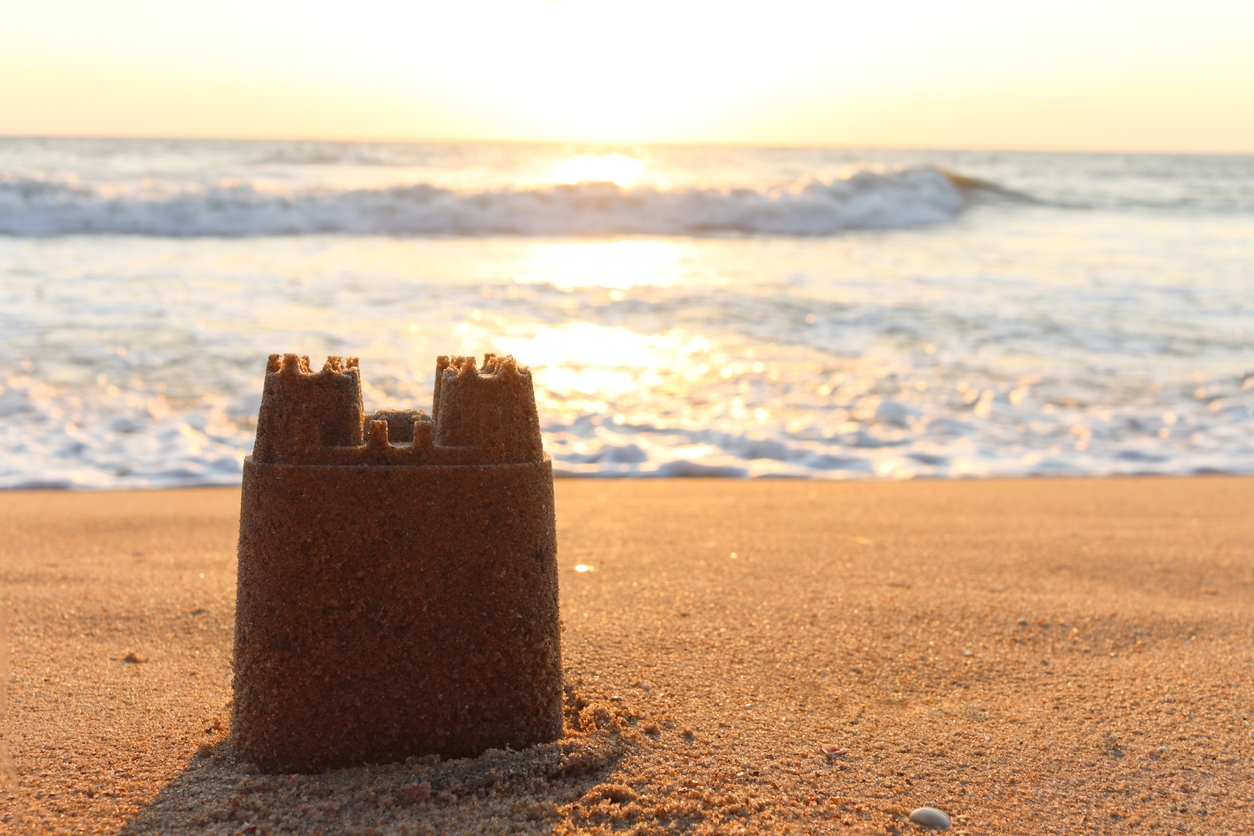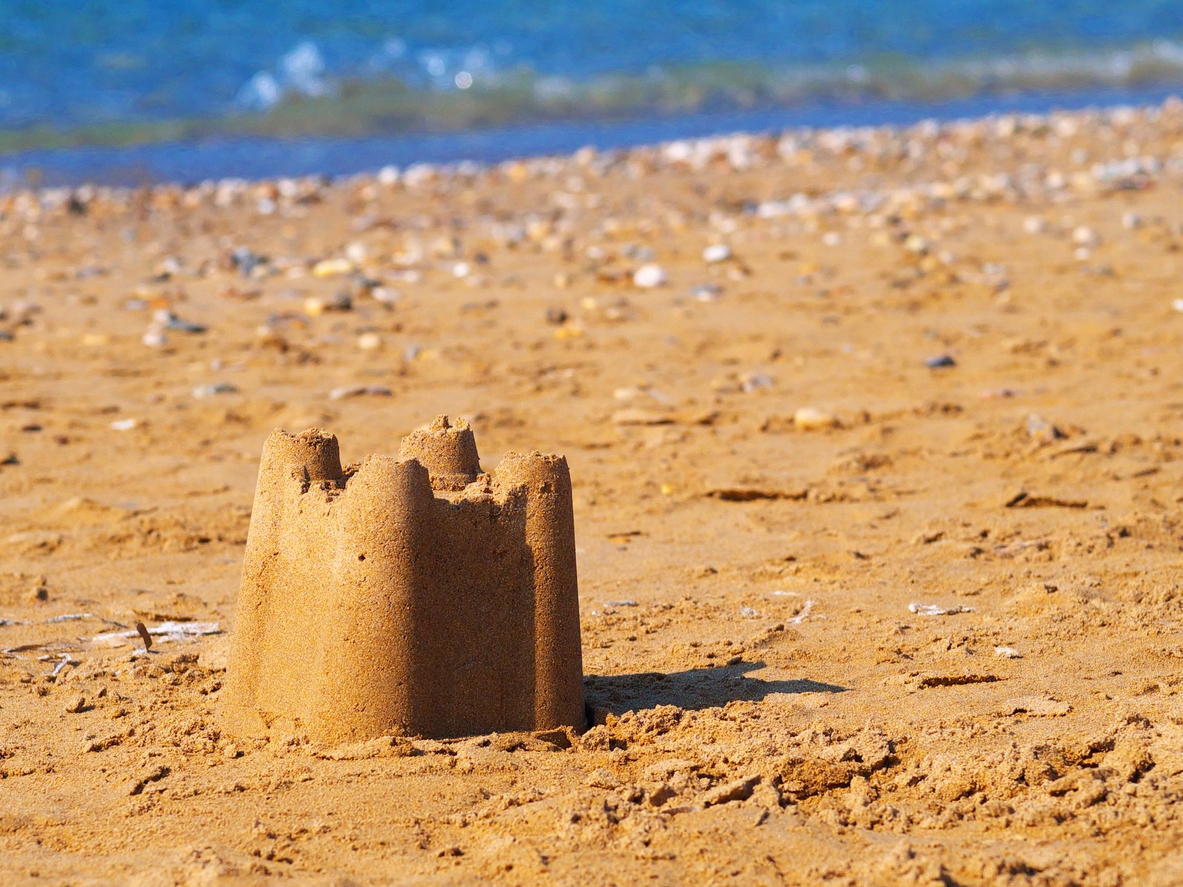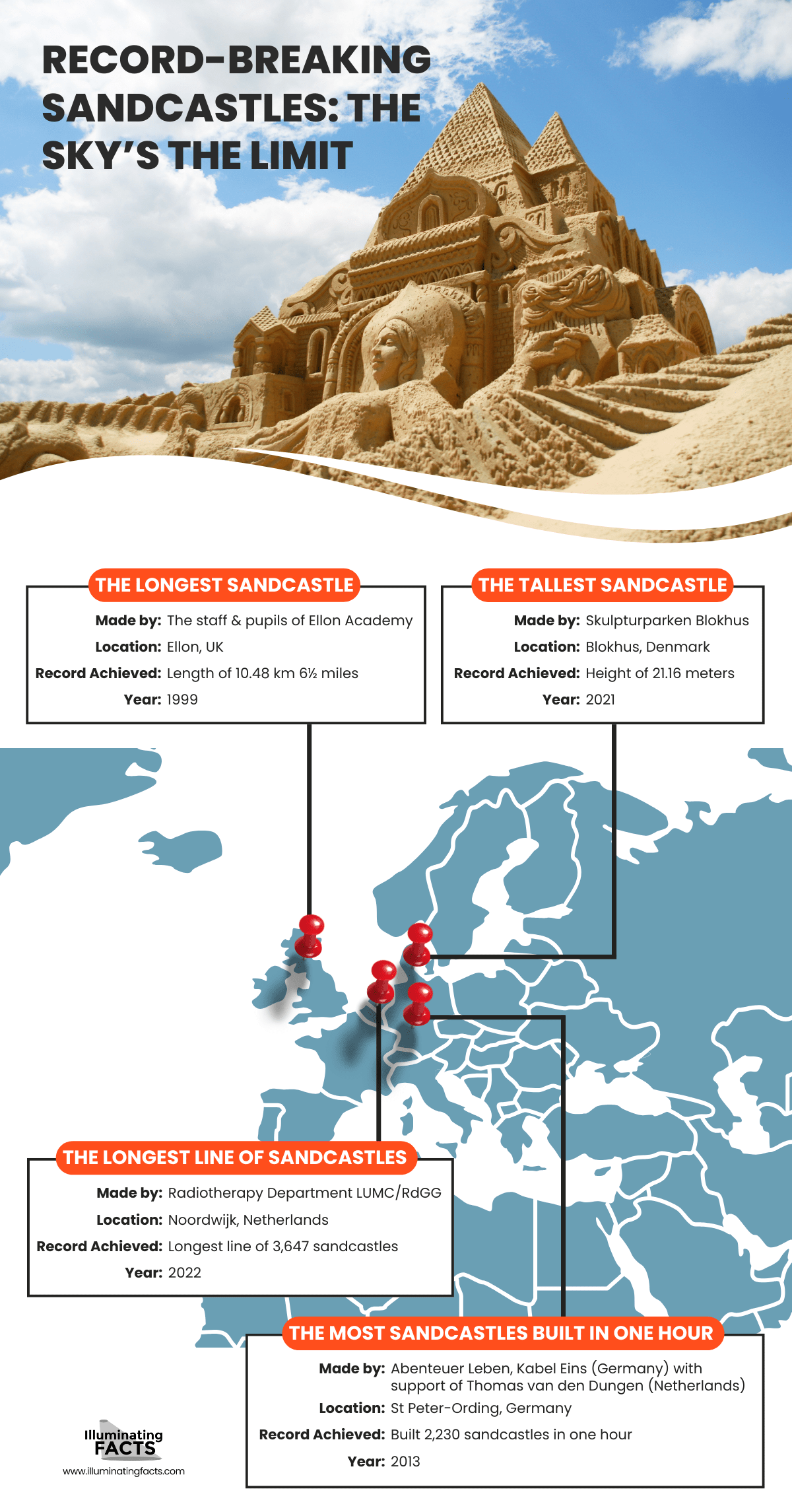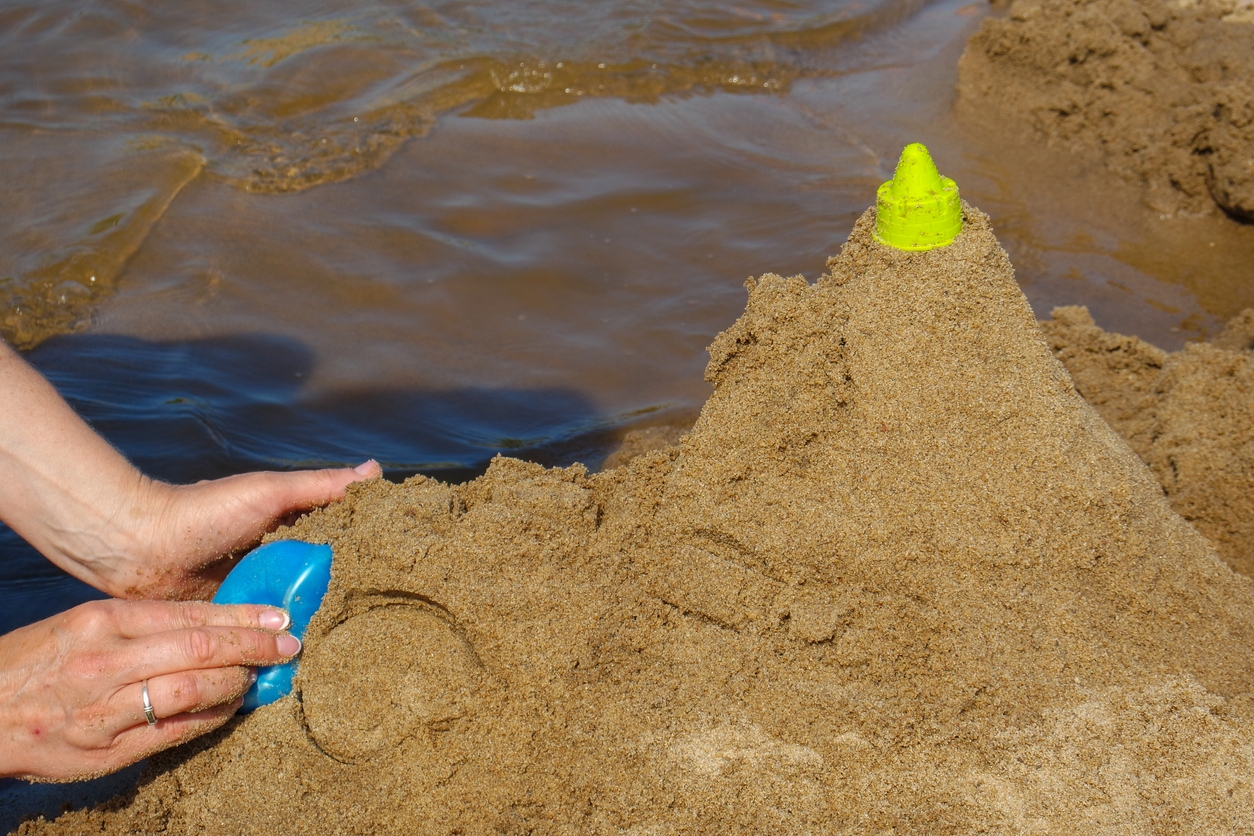For generations, the simple act of building sandcastles on the beach has delighted people of all ages. The soft, golden grains of sand transform into architectural wonders, molded by creative hands and vivid imaginations. Whether it’s a child’s first attempt or an elaborate masterpiece crafted by experienced hands, the process of constructing these sandy fortresses evokes a universal sense of joy and wonder.
Beyond their role as sources of amusement, sandcastles also hold a deeper significance. They symbolize the ephemeral nature of art and creation. Just as the tides wash away even the most intricate designs, life’s impermanence is reflected in the fleeting existence of these sandy sculptures. Yet, there’s beauty in this transience, as it encourages us to savor the present moment and appreciate the creative process itself. Let’s delve into the history to learn about the cultural significance and enduring allure of these delightful creations gracing the shorelines around the world.
The Earliest Forms: Sandcastles Through the Ages
A journey through history reveals that the tradition of building with sand is far from new, spanning centuries and cultures.
Civilization | Notable Sand Structures | Significance |
Egypt | Miniature sand pyramids inspired by the iconic pyramids | Early example of sand art's connection to grand architectural achievements |
Mesopotamia | Early experimentation with mud bricks | Precursor to sandcastle construction, showcasing human desire to shape the environment |
Middle Ages | Miniature sand castles inspired by medieval fortresses | Reflection of the architectural aspirations of the medieval era |
Renaissance | Ornate and artistic sand sculptures | Elevating sandcastles to an art form, reflecting the Renaissance's focus on aesthetics & innovation |
Ancient Civilizations and Sand Structures
During the time of Ancient Egyptian Empire, where monumental architecture flourished, sand sculptures took the form of miniature pyramids. These intricate sand replicas paid homage to the grandeur of the iconic Egyptian pyramids, showcasing the early link between sand art and architectural wonders.
The cradle of civilization, Mesopotamia, also fostered the development of sand-based structures. Long before the first bricks were fired, Mesopotamians molded mud and sand into rudimentary forms, foreshadowing the sophisticated construction techniques that would follow. [1] These humble beginnings hinted at the region’s future architectural achievements.
The Middle Ages: Castles as Inspiration
During the Middle Ages, European castles inspired a new generation of sand architects. As knights defended their stone fortresses, beachgoers, inspired by tales of chivalry, began crafting miniature castles in the sand. These miniature fortifications echoed the grandeur and romance of their stone counterparts, offering a whimsical escape for medieval dreamers.
The Renaissance: Artistic Flourish
In the Renaissance period, sandcastle building reached new heights of artistry. The Renaissance spirit of innovation extended to the beach, where architects, artists, and scholars used sand as their canvas. Elaborate sculptures, often inspired by classical themes, graced the shores, highlighting the intersection of art and nature. The Renaissance fascination with proportion, symmetry, and detail found expression in these ephemeral masterpieces, leaving a legacy of creativity in the sands of time.
The Cultural Significance: More Than Just Child’s Play
The art of sandcastle building transcends simple recreation, carrying profound symbolism in various cultures.
Symbolism in Different Cultures
In Eastern philosophies like Buddhism, sandcastles symbolize the transient nature of life. The meticulous construction and inevitable erasure by waves serve as a metaphor for impermanence, reminding practitioners to embrace the present moment. [2]
In Western cultures, sandcastles represent creativity and freedom of expression. Building these structures fosters imagination, emphasizing the value of play and artistic expression in both children and adults. [3]
Culture | Symbolic Meaning | Significance |
Eastern Philosophies | Represent impermanence and the fleeting nature of life. | Provides a powerful reminder to live in the present moment and let go of attachments. |
Western Views | Signify creativity, freedom of expression, and playfulness. | Encourages imagination, play, and the celebration of the creative spirit, transcending age and background. |
Sandcastles in Literature and Art
Sandcastles have not only left their impression on beaches but have also found a place in literature and art. From whimsical stories featuring sandcastle adventures to renowned artworks capturing their charm, sandcastles have permeated creative expressions. Renowned authors and artists have drawn inspiration from these sandy creations, showcasing their enduring impact on human culture and creativity.
| Literature and Art | Notable Works and Examples |
| Literature |
|
| Art |
|
The Science Behind the Perfect Sandcastle
Building the perfect sandcastle is not just an art, it’s also a science. Understanding the key scientific principles can make the difference between a shapeless heap and a majestic fortress.
| Key Factors | Significance |
| Water-to-sand ratio | Proper mixing ensures cohesion, making the sandcastle’s foundation sturdy and resistant to crumbling. |
| Optimal moisture content | The right balance of water prevents excess compaction and maintains the sand’s moldability. |
| Grain size and uniformity | Fine, well-rounded grains in beach sand offer better cohesion, ideal for intricate and stable designs. |
| Principles of compression and tension | Proper compaction at the base and careful carving maintain the sandcastle’s overall stability and form. |
| Tapered towers and arches | These architectural features distribute weight effectively, enhancing stability and aesthetic appeal. |
| Buttresses | Adding buttresses provides additional support, fortifying the sandcastle’s structure against collapse. |
The Role of Water: It’s All About the Mix
Water plays a pivotal role in sandcastle construction. The right water-to-sand ratio ensures optimal cohesion. Too much water weakens the structure, while too little results in a crumbly mess. Finding the perfect balance is key to creating a sturdy foundation for your sandy masterpiece.
Sand Types: Not All Sand is Created Equal
Not all sands are suitable for sandcastle building. Grain size matters, as fine, uniform grains create a stronger structure. Beach sand, with its well-rounded grains, is ideal. Coarser sands, like those found in deserts, lack the necessary cohesion, making them less suitable for intricate designs.
Structural Integrity: The Physics of Stability
The stability of a sandcastle depends on the principles of compression and tension. Compacting sand at the base creates a stable foundation, while gentle taps and carving maintain structural integrity. Tapered towers and arches distribute weight more effectively, while adding buttresses provides additional support. These architectural techniques enhance the sandcastle’s structural integrity.
Understanding these basic principles and techniques can help transform a pile of sand into an architectural marvel.
Modern-Day Sandcastle Competitions
Sandcastle building has evolved into a serious art form, showcased in international competitions that draw participants and spectators from around the globe.
The Art of Professional Sand Sculpting
Professional sand sculptors dedicate themselves to perfecting their craft. They undergo rigorous training to master the techniques of compacting, carving, and detailing. These artists use specialized tools to create stunning, often larger-than-life sand sculptures that captivate audiences worldwide. Their work blurs the line between temporary beachside art and enduring masterpieces.
Sand Sculpting Festivals in the US
Across the United States, numerous sand sculpting festivals draw artists and enthusiasts alike. Events such as the Hampton Beach Master Sand Sculpting Classic and the Texas SandFest in Port Aransas provide platforms for sculptors to showcase their skills and creativity. These festivals celebrate the artistry of sandcastle construction and foster a sense of community among participants. From showcasing international talent to celebrating local traditions in sandcastle building, they offer a diverse range of experiences for everyone.
Festival | Location | Key Highlights |
Siesta Key Crystal Classic | Siesta Key, Florida | Pristine white sands, live music, food vendors, art, and craft booths |
Revere Beach International Sand Sculpting Festival | Revere Beach, Massachusetts | Prestigious event with an international lineup of sculptors |
U.S. Sand Sculpting Challenge and Dimensional Art Expo | San Diego, California | Unique mix of sand sculpting and dimensional art |
American Sand Sculpting Championship | Fort Myers Beach, Florida | One of the largest and longest-running sand sculpting events in the US |
Texas SandFest | Port Aransas, Texas | The largest sand sculpting competition in the country, attracting both amateur and professional sculptors |
Neptune Festival Sand Sculpting Championship | Virginia Beach, Virginia | Part of the annual Neptune Festival, featuring world-class sculptors |
Cannon Beach Sandcastle Contest | Cannon Beach, Oregon | Set against the backdrop of Haystack Rock, a beloved tradition for over 50 years |
Hampton Beach Master Sand Sculpting Classic | Hampton Beach, New Hampshire | An invitational event with ten master sand sculptors competing for top honors |
Sand on the Riverfront | La Crosse, Wisconsin | A unique event along the Mississippi River featuring professional and amateur sand sculpting competitions |
Great Lakes Sand Sculpture Festival | Grand Haven, Michigan | Showcasing sand sculpting talents of regional and national artists along the shores of Lake Michigan |
European Sand Sculpting Festivals
Europe boasts a rich tradition of sand sculpting festivals. Events like the International Sand Sculpture Festival in Weston-super-Mare, UK, and the Sandskulpturen Festival in Binz, Germany, gather artists from around the globe to create intricate sand sculptures. These festivals merge art, culture, and entertainment, drawing both locals and tourists.
Record-Breaking Sandcastles: The Sky’s the Limit
In the world of sandcastle competitions, records are constantly shattered. Artists strive to build the tallest, most intricate, and visually striking sandcastles. The Guinness World Records frequently documents these feats, recognizing the dedication and innovation that sand sculptors bring to their craft. These record-breaking sandcastles serve as testaments to human creativity and determination in the realm of beach artistry.
Sandcastle | Made by | Location | Record Achieved | Year |
The Tallest Sandcastle | Skulpturparken Blokhus | Blokhus, Denmark | Height of 21.16 meters | 2021 |
The Longest Sandcastle | The staff and pupils of Ellon Academy | Ellon, UK | Length of 10.48 km 6½ miles | 1999 |
The Longest Line of Sandcastles | Radiotherapy Department LUMC/RdGG (Netherlands) | Noordwijk, Netherlands | Longest line of 3,647 sandcastles | 2022 |
The Most Sandcastles Built in One Hour | Abenteuer Leben, Kabel Eins (Germany) with support of Thomas van den Dungen (Netherlands) | St Peter-Ording, Germany | Built 2,230 sandcastles in one hour | 2013 |
These record-breaking sandcastles represent remarkable feats of creativity and engineering in the world of sand sculpting. They showcase the incredible potential of sand as an artistic medium.
Sandcastle Techniques: Building the Perfect Fortress
Creating the perfect sandcastle is an art that combines creativity with some fundamental techniques. Here are practical tips for each step of the process:
- Choosing the Right Sand: Opt for fine-grained, moist sand from the shore’s intertidal zone. It should be free from debris and have a consistency that allows it to stick together.
- Tools of the Trade: Gather essential tools, including buckets, shovels, sculpting tools, and brushes for smoothing surfaces.
- Creating a Solid Foundation: Start with a sturdy base. Pack damp sand into your bucket, then flip it over to form a solid foundation. Add more layers, gently compacting each one.
- Water: The Magic Ingredient: Keep a container of water nearby. Use it sparingly to moisten the sand as needed, making it easier to sculpt and shape.
- Building Forms and Molds: Utilize forms and molds for consistent shapes. Fill these with damp sand, compacting as you go, then carefully remove the form.
- Carving and Detailing: Carve details using smaller tools like spoons or knives. Pay attention to texture, adding shells, sticks, or rocks for decoration.
- Protecting Your Creation: To safeguard against erosion, create a moat around your sandcastle. Build up walls and terraces to divert water and reinforce vulnerable sections.
- Collaborative Sandcastle Building: If working with others, coordinate tasks. One person can focus on shaping while another keeps the sand moist. Teamwork is key to larger, more elaborate creations.
By following these practical tips, you can turn a pile of sand into a work of art, ensuring your sandcastle stands the test of time (or at least until the tide comes in).
Conclusion
From their humble origins to modern-day competitions, sandcastles embody creativity, culture, and a universal joy in creation. As we stand in awe of record-breaking sculptures and explore the symbolism of these transient structures, it’s clear that the appeal of sandcastles endures. They remind us of the limitless possibilities of art and the joy that can be found in even the most fleeting of creations. In this journey through the captivating world of sandcastles, we’ve discovered that these structures, built from the simplest of materials, hold a special place in our hearts, reminding us of the beauty that can be found in the ephemeral.
References
- Mesopotamia – Introduction to art. (n.d.). Boise State Pressbooks – Online Content Authoring. https://boisestate.pressbooks.pub/arthistory/chapter/mesopotamia
- CrowdSec ban. (n.d.). CrowdSec Ban. https://positivepsychology.com/impermanence/
- Tots, T. W. (2023, June 1). Unleashing creativity and development: The benefits of sand play in early childhood. Medium. https://travelingwithtots.medium.com/unleashing-creativity-and-development-the-benefits-of-sand-play-in-early-childhood-29d32aa9291c

